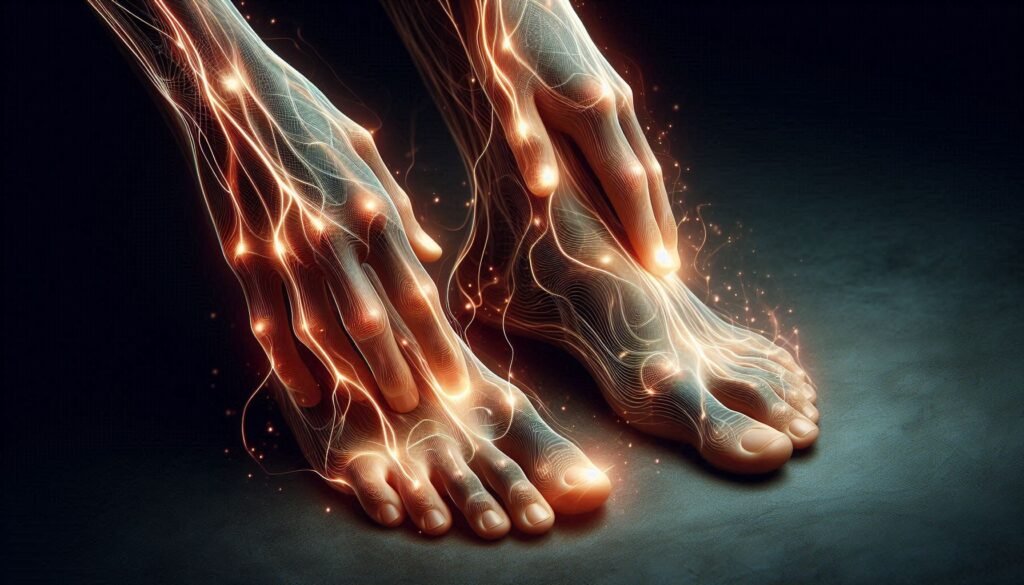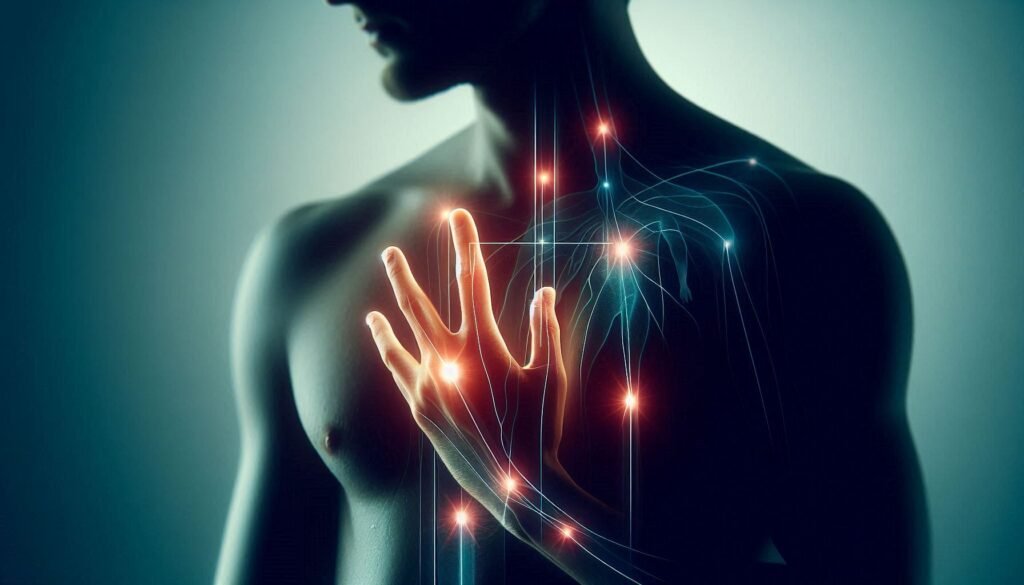Tingling sensations can be an everyday nuisance or a sign of something more serious. Have you ever felt that strange prickling feeling in your fingers, toes, or even along your arms? While often harmless, these sensations can sometimes indicate a condition known as paresthesia. Understanding when to worry about tingling is crucial for maintaining your health and well-being.
In this article, we’ll delve into the science behind these tingling feelings and explore their various triggers. By recognizing the difference between normal occurrences and concerning symptoms, you empower yourself with knowledge that could make all the difference. Let’s unravel the mystery of paresthesia together!

Discussing Tingling Sensations: Normal vs. Concerning
Tingling sensations often arise during everyday activities, such as sitting in one position for too long or sleeping on an arm. These moments of temporary tingling—often referred to as “pins and needles”—are typically harmless. They usually resolve quickly once you change positions or relieve pressure.
However, not all tingling is benign. When these sensations become persistent or recurrent, they may signal underlying health issues. Conditions affecting the nervous system, circulation, or metabolic functions can lead to more serious forms of paresthesia that warrant attention.
It’s also essential to consider the context when assessing your symptoms. For example, if tingling occurs alongside weakness or numbness in a limb, it could indicate nerve damage or injury requiring immediate medical evaluation.
Awareness of your body’s signals is key. Distinguishing between ordinary episodes and those that could hint at a more significant problem allows you to respond appropriately while prioritizing your health and safety.
The Science Behind Paresthesia-Induced Tingling
Paresthesia refers to abnormal sensations in the body, often described as tingling or “pins and needles.” This phenomenon occurs due to improper nerve function. When nerves are compressed or irritated, they can send mixed signals to the brain, resulting in these strange feelings.
The most common cause of paresthesia is temporary compression of nerves. For instance, sitting too long in one position can compress a nerve in your leg, leading to that familiar tingling sensation. Once you change positions and relieve the pressure, normal feeling typically returns.
In some cases, paresthesia could indicate underlying issues like diabetes or multiple sclerosis. These conditions affect how well nerves communicate with each other and the brain. Neuropathy from chronic diseases leads to persistent sensations that warrant further investigation.
Understanding how your nervous system works helps clarify why we experience these symptoms. It highlights the importance of recognizing when tingling becomes more than just an occasional nuisance needing attention.
Common Triggers of Temporary Tingling Sensations
Temporary tingling sensations can often be traced back to common triggers that most people experience at some point. One prevalent trigger is pressure on the nerves, usually from sitting or lying in one position for too long. This can lead to a brief sensation of pins and needles as blood flow returns.
Another frequent cause is anxiety or stress. These emotional states can stimulate nerve pathways, resulting in tingling mainly around the face and extremities. Many individuals report this phenomenon during heightened moments of tension.
Certain physical activities are also culprits. Repetitive motions, such as typing or playing an instrument, may irritate nerves over time, causing temporary tingling in fingers and hands.
Dehydration or electrolyte imbalances might contribute to these sensations. Insufficient hydration affects muscle function and nerve interactions, leading to unexpected feelings of numbness or tingling throughout the body.
Persistent Tingling: A Key Indicator of Paresthesia
Persistent tingling sensations, known as paresthesia, can signal underlying health issues. When tingling lasts for an extended period or frequently recurs, it’s essential to pay attention. Unlike temporary tingling caused by pressure on a nerve—like when your foot falls asleep—persistent symptoms may indicate nerve damage or dysfunction.
Conditions such as diabetes, multiple sclerosis, and peripheral neuropathy often present with lasting paresthesia. It’s not just the duration that matters; the accompanied intensity can also provide clues about potential problems in the nervous system.
If you find yourself experiencing ongoing tingling, it is crucial to monitor other symptoms that may arise alongside it. Changes in sensation coupled with muscle weakness or coordination issues warrant further investigation.
Ignoring persistent tingling could lead to missed diagnoses and complications down the line. Recognizing this key indicator early allows for better management of any underlying conditions affecting your health.
Tingling Patterns in Different Body Parts: What They Mean
Tingling sensations can occur in various body parts, and their location often provides clues about underlying issues. For instance, tingling in the fingertips may signal carpal tunnel syndrome or nerve compression. These conditions affect the median nerve, leading to discomfort that radiates into the hand.
When you experience tingling down one leg, it could indicate sciatica or a herniated disc pressing on nearby nerves. This type of sensation frequently accompanies lower back pain and might worsen with certain movements.
Tingling around the mouth or face can be more alarming. It sometimes points to neurological concerns such as multiple sclerosis or transient ischemic attacks (TIAs). It’s essential to pay attention if these feelings are sudden and accompanied by weakness.
Persistent tingling in both feet is often associated with peripheral neuropathy. Diabetes is a common culprit here but other factors like vitamin deficiencies and excessive alcohol use should also be considered when assessing symptoms.
Associated Symptoms That Elevate Concern for Paresthesia
Tingling sensations can sometimes be accompanied by other symptoms that warrant a closer look. If you experience weakness in the limbs, it may indicate nerve damage or compression. This combination of weakness and tingling should not be ignored, as it could signal underlying conditions.
Another concerning sign is sudden severe headaches or changes in vision alongside tingling. These symptoms might point to neurological issues such as stroke or transient ischemic attack (TIA). Prompt medical evaluation is essential if these occur together with tingling.
Additionally, if your tingling sensations are paired with difficulty speaking or facial drooping, immediate attention is necessary. These signs often correlate with serious health events requiring urgent care.
Fever and unexplained weight loss accompanying your tingling could suggest an infection or more severe illness. Monitoring these associated symptoms will help you determine when to seek professional advice about paresthesia concerns.
When to Consult a Healthcare Professional About Tingling
Tingling sensations can be perplexing. While many instances are harmless, there are specific scenarios where seeking medical advice is crucial. If the tingling persists for an extended period or occurs frequently, it’s time to consult a healthcare professional.
Additionally, if you experience tingling alongside other symptoms such as weakness, numbness, or difficulty speaking, don’t hesitate to reach out. These could indicate underlying conditions that require prompt attention.
Another red flag is when the tingling affects only one side of your body or leads to severe pain. This may signal a more serious issue that warrants immediate evaluation by a doctor.
If you have risk factors like diabetes or recent trauma leading up to the tingling sensations, it’s essential not to ignore these warning signs. A timely consultation can help ensure proper diagnosis and treatment plans tailored to your needs.
Diagnostic Approaches for Paresthesia-Related Tingling
Diagnosing paresthesia-related tingling involves a thorough evaluation by healthcare professionals. The process often begins with a detailed medical history and physical examination. Patients may be asked to describe the sensations, their duration, and any associated symptoms.
To pinpoint underlying causes, doctors might recommend imaging tests like MRIs or CT scans. These can reveal structural abnormalities in the spine or brain that could contribute to nerve issues. Blood tests are also essential for detecting conditions such as diabetes or vitamin deficiencies that may lead to tingling sensations.
Electromyography (EMG) is another common diagnostic tool used to assess electrical activity in muscles. Alongside nerve conduction studies, EMGs help determine if nerves are functioning properly or if there’s damage present.
In some cases, additional specialized tests may be necessary based on initial findings. This comprehensive approach ensures accurate diagnosis and effective treatment strategies tailored to individual needs.
Treatment Options for Managing Chronic Tingling Sensations
Managing chronic tingling sensations often requires a multi-faceted approach. Treatment can vary based on the underlying cause, but several common options exist to alleviate discomfort.
Medication is frequently prescribed for nerve-related issues. Anti-inflammatory drugs, anticonvulsants, and antidepressants can help reduce pain and improve symptoms. Your healthcare provider may also recommend topical treatments that numb the area or increase blood flow.
Physical therapy plays a crucial role in rehabilitation. Targeted exercises can strengthen muscles and enhance flexibility, helping to relieve pressure on nerves. Therapists may incorporate modalities like massage or electrical stimulation as well.
Lifestyle changes are essential too. Maintaining proper hydration and nutrition supports nerve health. Regular exercise boosts circulation while reducing stress levels—both of which can mitigate tingling sensations effectively. Emphasizing good posture during daily activities is another key aspect of treatment, helping prevent unnecessary strain on your body’s nerves.
Lifestyle Modifications to Alleviate Paresthesia-Induced Tingling
Lifestyle modifications can play a significant role in alleviating paresthesia-induced tingling sensations. Simple changes can enhance your overall well-being and reduce the frequency of these sensations.
First, focus on maintaining good posture. Proper alignment helps prevent nerve compression that often leads to tingling. Ergonomic furniture at home or work can make a big difference.
Regular exercise also promotes better circulation, which is essential for nerve health. Aim for activities like walking, swimming, or yoga that enhance flexibility and blood flow without straining your body.
Staying hydrated is crucial as dehydration can exacerbate neurological symptoms. Drinking plenty of water throughout the day supports optimal bodily functions.
Moreover, consider incorporating stress-reduction techniques into your routine. Practices such as mindfulness meditation or deep-breathing exercises help manage anxiety and tension that may contribute to tingling sensations.
Ensure you’re getting enough vitamins and minerals—especially B vitamins—which are vital for nerve function. A balanced diet rich in fruits, vegetables, whole grains, lean proteins, and healthy fats will support both physical and mental health.
By adopting these lifestyle strategies proactively, you may find relief from bothersome tingling sensations related to paresthesia while enhancing your quality of life.


